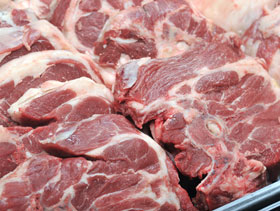 yes is very optimistic about US pork export opportunities.
yes is very optimistic about US pork export opportunities.“We completely lost the Russian market, and in March of 2013 we almost lost the Chinese market. In spite of this, exports were relatively stable 2011 through 2013,” says Dr Hayes.
“We have Free Trade Agreements (FTAs) with several Latin American countries, which are now a top volume market. Exports are surging to this area, which compensates for losing Russia.”
“Everything looks good for the first quarter of 2014. However, US pork production could fall 4-6 per cent due to PED. Other countries, including Japan, Mexico, Korea, Canada and Colombia have PED, so exports will be up.”
He sees the following trends in important markets:
Mexico: Pork imports up.
Japan: Aging population, increasing own pork production. Japan is US #1 value market. It’s the high value cuts of meat that they import.
South Korea: Imports growing again after Foot and Mouth Disease disruption.
Colombia: A text book success story for both countries. Colombians are able to eat more pork due to US chilled pork exports to them.
Australia: Domestic campaign against US product.
New Zealand: US has complete access but limited by FSIS (USDA Food Safety and Inspection Service) interpretation.
China/Hong Kong: Exports to China could allow the US to double pork production. Recent decision to import US chilled pork.
China has 50 million sows (in comparison, the US has 6 million sows). Pig density issues in China are causing diseases. Chinese imports of animal protein outpace their feed imports, even though they import 70 million tons of grain.
Tastes are fundamentally different between China and the US. Chicken heads and fish eyes are a delicacy, and the Chinese will pay a premium for these. This has potential to add value to US exports.
The Chinese pork industry is huge. They have been growing herds, but running into disease issues. If they start to import more, the potential is huge for the US. China is killing millions of sows because they can’t feed them with $12/bushel corn, due to limited imports. China had restricted corn imports. However, they have now changed their policy and will probably not produce corn and soy because of their land shortage (since those two crops are very land intensive).
Current Negotiations
The US is signing free trade agreements with Japan, Australia, Brunei, Chile and Canada. There are bilateral talks between Japan and the US over agriculture. Japan is also negotiating FTAs with Canada, the European Union and Australia.
In US negotiations with the European Union (EU), that region has a general willingness to reduce duties. The EU is intransigent on non-tariff barriers against GMOs and growth promoters. (EU consumers have lost faith in regulatory science because of past failures.) There will be enormous US export opportunity for processed pork if the deal goes through.
Both Mexico and Canada said COOL (Country of Origin Labeling) is a trade restriction and will impose duties on US pork and chicken. Dr Hayes said this reaction to COOL “will serve us right. What we did is wrong. However, before that happens, I think the US congress will see the light.”





